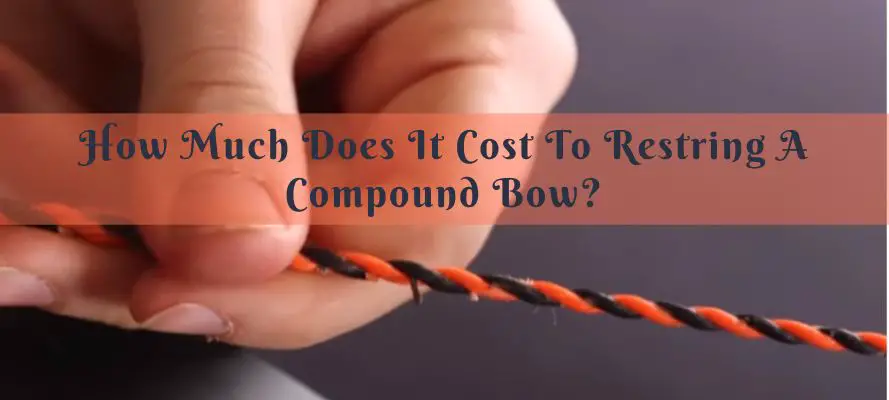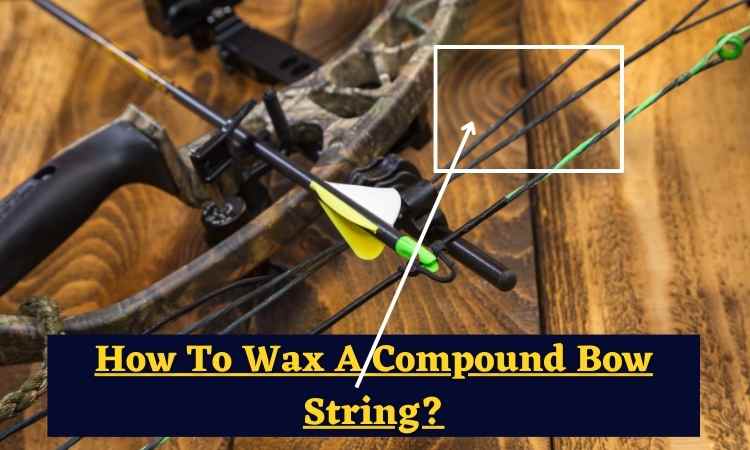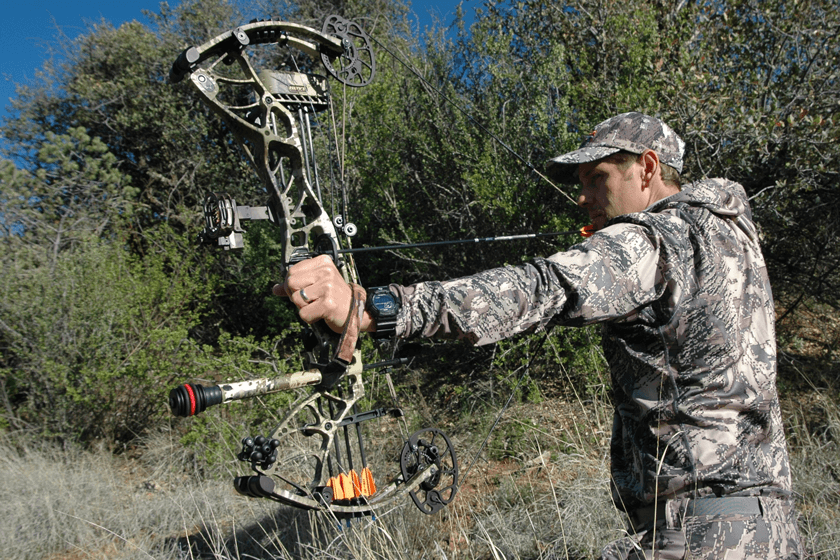To restring a compound bow, follow these step-by-step instructions. Restringing a compound bow involves carefully removing the old bowstring, attaching the new string, and adjusting it for proper tension and alignment for optimal performance.
It is essential to follow these steps precisely to ensure safety and accuracy in the process.
Credit: www.fieldandstream.com
Step 1: Gather The Necessary Tools And Materials
Before you begin restringing your compound bow, it’s important to gather all the tools and materials you’ll need. Here are the essential items you’ll require:
- Bowstring: This is the main component that needs to be replaced or restrung. Make sure you have a high-quality bowstring that is suitable for your specific compound bow model.
- Bow stringer: A bow stringer is a handy tool that helps safely remove and install the bowstring. It ensures that the string is properly aligned and prevents damage to the bow or yourself during the process.
- Bow wax: Bow wax is used to lubricate and protect the bowstring, prolonging its lifespan. Apply a small amount of wax to the string regularly to prevent fraying and keep it in good condition.
- Allen wrench: Most compound bows have adjustable elements that require an Allen wrench for tightening or loosening. Check your bow’s manual to determine the specific size of Allen wrench you’ll need.
- Pliers: Pliers are useful for various tasks during the restringing process, such as removing old string loops and installing new ones. Make sure you have a pair of pliers with a comfortable grip to handle these tasks efficiently.
Gather these tools and materials before moving on to the next step.
Having everything ready beforehand will streamline the restringing process and ensure a smooth experience.
Now that you have all the necessary items, you’re ready to proceed to the next step.
Step 2: Remove The Old Bowstring
To restring a compound bow, you need to start by removing the old bowstring. Here’s how you can do it:
Loosen The Limb Bolts
- Before removing the bowstring, loosen the limb bolts on your compound bow. This will reduce the tension on the bowstring and make the removal process easier.
Remove the bowstring from the cams and the idler wheel:
- Take note of the following steps to safely remove the old bowstring from the cams and the idler wheel:
- Start by locating the cam or cams on your compound bow. These are the wheel-like mechanisms at the tips of the bow limbs.
- Use your fingers or a bow stringer tool to release the tension on the cam by sliding it toward the center of the bow. This will create slack in the bowstring.
- Once there is enough slack, you can use your fingers or a string separator tool to carefully detach the bowstring from the cam. Do this on both cams.
- Moving to the idler wheel, you’ll find it near the grip of the bow. Repeat the process of releasing tension and removing the bowstring from the wheel.
- Be cautious while removing the bowstring from the cams and the idler wheel, ensuring a smooth and controlled process.
- Once the old bowstring is completely detached, set it aside for disposal or further inspection.
Removing the old bowstring from the cams and the idler wheel is a crucial step in restringing your compound bow. Following these steps will help you complete this task successfully and prepare for the next steps in the restringing process.
Step 3: Measure And Prepare The New Bowstring
After removing the old bowstring, it’s time to measure and prepare the new one. This step is crucial to ensure the bowstring fits your compound bow perfectly and performs optimally. Here’s a step-by-step guide on how to measure and prepare the new bowstring:
Determine The Correct Length For Your Bowstring
- Start by checking the manufacturer’s specifications for your compound bow. They usually provide information on the recommended bowstring length based on your bow’s model and draw length.
- If you don’t have access to the manufacturer’s specifications, you can measure the length of your old bowstring. Make sure to measure from tip to tip, following the curve of the bowstring to get an accurate measurement.
- Alternatively, you can measure the length of your compound bow’s limbs. Measure from the string groove of one limb to the string groove of the other, following the bow’s curve. Add a few inches to this measurement to ensure the bowstring isn’t too short.
- Once you have determined the correct length for your bowstring, trim any excess material using sharp scissors or bowstring cutters. Be sure to leave some extra length for attaching the serving later in the process.
Choose The Appropriate Material And Color For Your New Bowstring
- Selecting the right material for your bowstring is essential to achieve optimal performance and durability. There are different materials available, such as dacron, fast flight, and Bcy-x. Research and consider the pros and cons of each material to determine which one suits your needs best.
- Consider the color of your new bowstring. While it may seem like a purely aesthetic choice, the color can impact your shooting experience. Bright colors can make it easier to see the string while aiming, enhancing your accuracy.
- Remember that some materials may require additional maintenance, such as waxing, to prolong the lifespan of the bowstring. Consider your preferences and maintenance capabilities when choosing the material.
Step 4: Install The New Bowstring
After removing the old bowstring following the previous steps, it’s now time to install the new bowstring. This step-by-step guide will walk you through the process to ensure a successful restringing of your compound bow. Follow these instructions closely to avoid any mishaps.
Begin By Attaching The New Bowstring To The Top Cam:
- Start by aligning the new bowstring with the groove on the top cam.
- Carefully insert the bowstring into the cam’s groove, making sure it settles securely.
- Ensure that the loop of the bowstring is facing the correct direction, corresponding to the specific type of cam system your bow has.
- Gently apply pressure to lock the bowstring into place, ensuring a snug fit.
Loop The Bowstring Around The Idler Wheel:
- Once the new bowstring is securely attached to the top cam, move on to looping it around the idler wheel.
- Position the bowstring on the same side as the top cam and guide it around the idler wheel until it reaches the other end.
- Be cautious not to twist or tangle the bowstring during this process to maintain optimal performance.
Attach The Bowstring To The Bottom Cam:
- With the bowstring successfully looped around the idler wheel, it’s time to attach it to the bottom cam.
- Align the loop of the bowstring with the groove on the bottom cam, ensuring it fits snugly.
- Verify that the bowstring is correctly positioned in the groove, allowing for smooth operation when drawing and releasing.
- Apply gentle pressure to secure the bowstring in place, making sure it is seated properly.
Step 5: Adjust The Brace Height And Draw the Weight
When it comes to adjusting a compound bow, two important factors to consider are the brace height and draw weight. The brace height refers to the distance between the grip and the bowstring when the bow is at rest. The draw weight (which can be increased or decreased), on the other hand, is the amount of force required to pull back the bowstring.
Properly adjusting these two factors is crucial for optimal performance and accuracy. Follow the steps below to make the necessary adjustments:
Increase Or Decrease Brace Height Using The Limb Bolts
Adjusting the brace height of a compound bow can help fine-tune its performance. Here’s how you can increase or decrease the brace height using the limb bolts:
- Begin by identifying the limb bolts, which are located at the end of each limb.
- To increase the brace height, turn the limb bolts clockwise. Remember to make small adjustments, as even a quarter turn can have a noticeable impact.
- To decrease the brace height, turn the limb bolts counterclockwise. Again, make small and gradual adjustments to avoid overcompensating.
- After each adjustment, it’s important to measure the brace height to ensure it falls within the manufacturer’s recommended range. Use a brace height gauge or a ruler to measure the distance between the grip and the bowstring.
Adjust Draw Weight By Twisting Or Untwisting The Bowstring
Fine-tuning the draw weight of a compound bow can help customize it to your individual strength and shooting preferences. Here’s how you can adjust the draw weight by twisting or untwisting the bowstring:
- Start by examining the bowstring closely. You will notice that it consists of several strands twisted together.
- To increase the draw weight, twist the bowstring clockwise. Each full twist will generally increase the draw weight by a few pounds, so be mindful of the desired adjustment.
- To decrease the draw weight, untwist the bowstring counterclockwise. Again, keep an eye on the number of twists, as each one will have an impact on the draw weight.
- Similar to adjusting the brace height, measure the draw weight after each twist or untwist to ensure it aligns with your preferences.
Step 6: Apply A Thin Layer Of Bow Wax To The Bowstring
To ensure that your compound bow remains in optimal condition, it’s essential to apply bow wax regularly. Bow wax serves two primary purposes – maintenance and protection. It helps lubricate the bowstring, reducing friction and extending its lifespan. Additionally, it forms a protective layer that shields the string from environmental factors such as moisture, dirt, and UV rays.
Follow these steps to apply bow wax effectively:
- Prepare the bowstring: Before applying bow wax, ensure that the bowstring is clean and free from debris. Use a clean cloth or a bowstring cleaner to remove any dirt or residue.
- Choose the right wax: There are various types of bow wax available in the market. Select a high-quality wax that is specifically designed for bowstrings. This will ensure optimal performance and protection.
- Apply a thin layer: Take a small amount of bow wax and apply it to the entire length of the bowstring. Be sure to distribute it evenly, covering both the top and bottom portions. Remember, a little wax goes a long way, so there’s no need to apply too much.
- Rub the wax in: Using a clean cloth, rub the bow wax into the bowstring. This will help distribute the wax evenly and ensure it adheres to the string. Make sure to cover every part of the string, including the servings and center serving.
- Remove excess wax: After rubbing in the wax, use another clean cloth to remove any excess. The bowstring should have a thin, even layer of wax, without any noticeable buildup. Excess wax can attract dirt and debris, which may affect the performance of the bowstring.
- Repeat regularly: It’s important to reapply bow wax periodically, especially if you frequently use your compound bow. Follow the manufacturer’s recommendations regarding how often to apply wax for optimal maintenance and protection.
By applying bow wax correctly, you not only prolong the lifespan of your compound bow’s string but also maintain its performance. Taking a few minutes to apply wax regularly can make a significant difference in the long-term durability and functionality of your bow.
Step 7: Inspect And Test The Restrung Compound Bow
After successfully restringing your compound bow, it is crucial to inspect and test it to ensure proper function and safety. Follow these steps to thoroughly examine and evaluate your restringed bow:
Check For Any Signs Of Damage Or Wear:
- Inspect the limbs, cams, and other components for cracks, bends, or any physical damage that may affect the bow’s performance.
- Examine the bowstring and cables for frayed or worn areas, as these can compromise the integrity of the strings.
- Check the string loops and servings for any signs of separation or excessive wear.
Draw And Shoot The Bow To Ensure Proper Function:
- Start by drawing the bowstring back slowly, paying attention to any unusual resistance or noise.
- Ensure that the draw weight feels consistent and smooth throughout the entire draw cycle.
- Fully draw the bowstring and hold it for a few seconds to determine if it feels steady and comfortable.
- Release the string and observe the bow’s reaction. It should return to its original position without any jerking or excessive vibrations.
- Repeatedly draw and shoot the bow, carefully evaluating its performance and feeling for any irregularities or issues.
Remember, a properly restrung compound bow should exhibit smooth and consistent performance without any signs of damage or wear. If you notice any abnormalities during the inspection or testing process, it is essential to address them before using the bow for hunting or target shooting.
Frequently Asked Questions
Can I Restring A Compound Bow Myself?
Restringing a compound bow can be a complex process, and it is recommended to have it done by a professional if you are not familiar with the necessary techniques and equipment.
How Often Should I Restring My Compound Bow?
The frequency of restringing your compound bow depends on how often you use it.
It is generally recommended to restring your bow every 2-3 years or sooner if you notice any signs of wear or damage.
What Are The Benefits Of Restringing A Compound Bow?
Restringing a compound bow helps to maintain its performance, accuracy, and safety.
It ensures that the bow’s limbs stay properly tensioned and reduces the risk of the string breaking during use.
What Should I Do If I Don’t Feel Comfortable Restringing My Compound Bow?
If you are unsure or uncomfortable restringing your compound bow yourself, it is best to take it to a professional who has the knowledge and experience to handle the task safely and effectively.
Conclusion
Restringing a compound bow may seem like a daunting task, but with the right knowledge and step-by-step guide, it can be easily accomplished. Start by loosening the tension on the limbs, remove the old bowstring, and clean the bow thoroughly.
Next, install the new bowstring, making sure it is properly aligned and centered. Then, adjust the tension and brace height to achieve optimal performance. Remember to regularly check the bowstring for wear and tear and maintain the proper waxing routine to prolong its lifespan.
To follow these simple instructions, you can keep your compound bow in top shape and enjoy the accuracy and reliability it offers.
So, grab your tools and start to restring your bow today

General Manager & Auditorial Head.
Killian Jake is a World Sports Traveler and hobbyist sports lover. By exploring different sorts of playing modules like indoor, outdoor, and many more. As for professionalism and writing, it’s helpful to give you the right suggestions on different games and sports.




